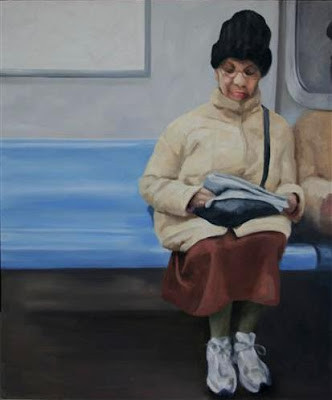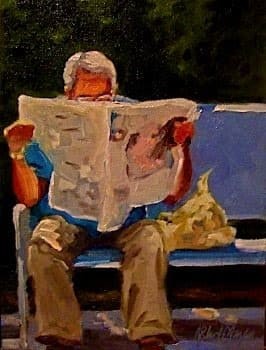As most of you know, the common core state standards (CCSS) make a big deal about informational text. Unlike typical state standards, CCSS treats the reading of informational text as being as important as reading literary text. That is a wonderful shift and one that could bear real benefits for children.
Of course, this is not a new issue. When I was in graduate school (a long time ago), one of my advisors, Richard Venezky, published a wonderful article entitled, Crossing a Chasm in Two Leaps. In it, he detailed how children were confronted by the problem of literacy. They first had to learn how to decode and read literature and then if they accomplished that successfully, they then had to master informational text. His not-too-subtle point was that when jumping over chasms one should try to get all the way across on the first jump: students needed to have more experience with informational text from the get go.
Importance of Informational Text
Why is informational text so important? First, is its role in learning. Look at a typical high school curriculum. Students take an English class where they read literature, but they also take a World Culture class, a biology class, an Algebra class, etc. In other words, most academic learning opportunities involve the reading of text that is not literary. Of course, it is even clearer in the workplace. When was the last time your boss asked you to read a novel, short story, or poem? From the most basic health and safety forms, to the detailed reports and specs of various jobs, one finds nary a poem.
Another reason is that many kids prefer informational text to stories. That one upsets many reading teachers and English teachers because we so resonate with a good story. It is hard to accept that many kids prefer to curl up with a good book about computers or dinosaurs. It takes all kinds.
Needless to say, I’m happy the CCSS emphasize info text (and the new assessments are going to treat informational and literary texts as co-equals, too).
However, I’m getting queries from educators about the right mix of texts. David Coleman and his crew put out specifications telling what percentage of daily reading needs to be informational, and all of a sudden I’m hearing that reading textbooks have to be 50-50 or 60-40 in their mix of literature and information. (The Chicago Tribune even did a front-page story on this because it is such a big deal in the schools).
What does the research say is the best mix of text to foster optimum student learning?
Research on the Mix of Literary and Informational Text
The research is silent on the issue. No one has any evidence that one mix or another is best or worst. It is certainly clear that our predominant emphasis on literary texts in elementary schools and English classes makes no sense, given that our kids do worse with informational text than literary text (according to PISA, the international comparisons). Earlier in the decade analyses indicated that elementary reading textbooks were about 80-20 in their emphasis on literature, and in schools where textbooks weren’t used, the imbalance was often even worse.
When someone tells you 60-40 or 50-50 or anything that specific you can be absolutely certain that they made it up. Ignore made up statistics or at least ask for a source of evidence. Given the certainty in these prescriptions I’m surprised we haven’t been told that the right mix is 53.65%-46.35% (with rounding of course).
Let’s get down to basics. The whole idea is to provide kids with a really good mix of literary and informational reading experiences so that they have sufficient opportunity to gain both sets of skills.
Coleman and company called for a 50-50 split between literary and informational text in the elementary school. But that doesn’t mean a core program has to include a 50-50 split of materials, since Coleman’s estimate has to do with all classroom reading, including reading subject matter materials in science and social studies.
Text Throughout the Curriculum
In other words, you can’t just look at the books themselves. How much reading are students actually doing throughout their school day? This is often quite limited–even just a few minutes a day according to some studies (teacher’s often don’t use textbooks in those other subjects—some districts have even stopped providing such texts; and even when they do the teacher may be doing the reading—which doesn’t count).
It is a rare school district that has any idea how much reading its children are engaged in throughout the day in the various subjects—and it varies quite a bit by classroom. To ensure a 50-50 split in student experience would require knowing those statistics (in fact, studying the classrooms would be every bit as important as studying the textbooks themselves).
In a classroom with lots of other reading, it would be okay to have a reading program that had a larger proportion of literary text than informational, while in a classroom with little such reading, something more in the range of 50-50 would be essential to give kids anything like the envisioned experience.
What is Informational Text and How to Count It
Another complication is that not all non-fiction selections are informational text. Informational text is text that provides information about the social or natural world, and deals with classes of objects and experiences rather than individual instances. Thus, an article about spelunking would be informational, but a narrative that tells the story of someone’s actual spelunking adventure would not be. Or, an article on porpoises and how they communicate would be informational, but Flipper’s life story falls into the literary pot (even though it might be a true story). In many cases, people are counting up all their non-fiction and claiming it as informational. Frankly, the skills needed to read a fictional story and a true life story are not so different; making sure that kids get a lot of non-fiction reading experience won’t suffice. Of course, if educators and publishers don’t know the difference between non-fiction and informational text, any text counts they provide will be misleading.
Another counting complication has to do with whether you count words, pages, or selections. Two programs may have a 50-50 mix of literary and informational text when counted by selection, but even with that students could end up spending too much time on literary text because the literary selections average 20 pages each and the informational ones only 5. If the short reads are informational and the extended ones literary (including biographies, autobiographies, true narratives), then your program is not balanced.
I think the notion that there is a specific mix of texts that has to be included in a program is just too simplistic and it trivializes what the common core is getting at (remember there is no research on what the mix should be in terms of kids learning). Coleman put out those 50-50 estimates to emphasize the equal value of these texts in student learning, and that reading/literature programs could not continue to be as imbalanced as they have been.
The Real Point
The real point is that students must be engaged in a substantial amount of reading experience with both literary and informational text. If a program obviously provides that it would be foolish spending a lot of time trying to make sure that they are balanced in any particular way. It is essential that we beef up informational text learning, and kids have been getting too little experience with such texts (perhaps some imbalance will be needed for a while to allow kids to catch up with informational text). But the common core does not require any particular mix of texts in a reading program or a literature program, nor should it.
That the elementary reading experiences should be substantial and roughly balanced in its attention to informational and literary text is fair guidance. As is the idea, that secondary reading experiences should be even more substantial, and should accord even more attention to informational text (perhaps two-thirds to 80%).
If you are an elementary teacher or principal and you are trying to select a textbook or to assemble your own units, you need to ask yourself: Given the amount of reading that our students are engaged in throughout our curriculum, will this new material be sufficient to ensure that students will learn to deal with both literary and informational texts. No one can tell you the exact mix that should be there and counting all of this is complex, but I would say anything in the 60-40—40-60 range is likely to be appropriate depending on how much reading students are engaged in all of their subjects. Trying to come up with something more exact than that is like slicing the salami so thin that it can’t be tasted.
In terms of high school literature anthologies, again, attention must be given to how much students are reading in their subject area classes. If they are reading very much there, then a literary anthology would only address perhaps 20-40% of the students’ school reading. If I do the math right, then by the guidelines being bandied about, an anthology could include zero to 25% informational text. But that would be problematic, too, since 0% might mean that students would get no experience in analyzing the rhetoric of speeches, and the reading of essays, journalistic writing, and literary non-fiction. That obviously is too little even though it falls within those general guidelines. But 25% seems too high to me; in such a school that needed to devote a quarter of English instruction to those types of text, I would work harder to get the rest of the faculty to beef up their text use rather than reducing the reading of stories, plays, and poems.
Please pass the bologna.







Comments
See what others have to say about this topic.